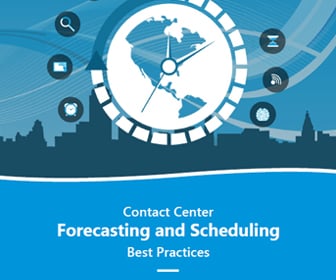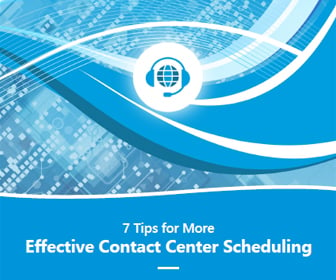Workforce Management Featured Article
Taking the Guesswork Out of Contact Center Staffing
Imagine if instead of using a sophisticated algorithm to produce its search results, Google (News ![]() - Alert) employed a few employees who had to take search requests manually and scour the Internet for the most relevant websites? Users would wait far longer for results and the ones they got would often be inaccurate or incomplete. So it’s a good bet the company would not be worth $382.5 billion as it is today.
- Alert) employed a few employees who had to take search requests manually and scour the Internet for the most relevant websites? Users would wait far longer for results and the ones they got would often be inaccurate or incomplete. So it’s a good bet the company would not be worth $382.5 billion as it is today.
Although this may be an extreme example, it proves an important point: for complex tasks involving multiple data sets that change continuously, a sophisticated algorithm is a faster, more accurate way to arrive at a solution than manual calculation. And that statement is just as valid for contact centers as it is for search engines.
The bottom line is simple: Any contact center manager or supervisor who is still trying to create staffing schedules manually simply cannot be completing those tasks as efficiently as possible. Such staffing schedules must be created based on too many variable factors for a manager to incorporate and calculate by hand and arrive at the optimal result. Schedules also change regularly, making the task even more challenging.
Take a contact center manager working for a vehicle roadside assistance provider as an example. With a foot of snow predicted for the region the next day, that manager knows he or she will need more agents on call than would be necessary on a typical day. But questions remain:
- Just how many additional agents will be necessary?
- Can the need be covered by staffers, or will the manager need to enlist help from “freelance” representatives?
- How many agents with specialized expertise in snow-related vehicle problems will be needed?
- Will shifts need to be extended to accommodate call volume?
To reliably answer these questions, the contact center needs to access data from similar storms in the past and use the information to predict the resources it will need for the coming storm. If it cannot take this information into account—or if manually looking at archived data and trying to interpret it to make future predictions is impossible—any attempt a manager makes at staffing according to need is essentially guesswork. If the contact center guesses wrong, it will either under staff—creating long hold times, low customer satisfaction and potentially breached SLAs—or overstaff, which is a waste of money.
A forecasting algorithm that can intelligently recognize patterns in past data, incorporate information about agent skill sets and predict future customer actions based on past behavior can take any guesswork out of contact center staffing. Best-in-class workforce management solutions that leverage such algorithms can create staffing schedules automatically by taking all relevant factors into account, removing the burden off a manager or supervisor’s plate. Such technology can also push daily schedules and changes out to agents automatically, relieving busy managers of another time-consuming task and saving the business money on expensive paper schedule printing and distribution.
According to research from Dimension Data (News - Alert), 29 percent of contact centers have no workforce management system. Just as call recording, speech and desktop analytics, e-learning and coaching, and live monitoring are essential parts of a best-in-class workforce optimization solution, if that solution does not include workforce management built on a predictive algorithm, contact center managers are likely still doing more manual work than necessary and not allocating staff resources as effectively as possible. Put another way, a workforce optimization puzzle without a sophisticated staffing algorithm is missing a crucial piece.
Robyn Thompson is Director of Marketing at TelStrat, a provider of Call Recording and Workforce Optimization solutions. She has broad cross-industry experience working with B2B technology firms including telecommunications, ERP, supply chain, CRM and e-learning. Robyn is a passionate customer advocate, always interested in helping companies write their next success story.
Edited by Stefania Viscusi







